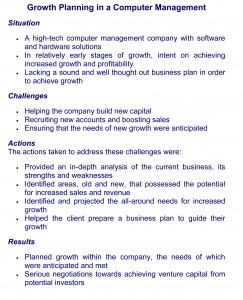
How to write a case study?
What is a Case Study and why are they Special?
Before you commence writing a case study it’s necessary to understand exactly what one is, the aim and the steps necessary to take to construct the study.
One of the big advantages of case studies as a way of presenting research is that they bridge the gap between pure data and the reality in everyday life. By concentrating on just one, or a small number of closely related examples, it is possible to bring the theories and results of the analysis into the real world. By narrowing down the research to one individual or group, it is possible to delve deeper into the problem and therefore become aware of the possible solutions. Thus, case studies are known for their “thick description” of contexts of the sites studied.
But, though a case study is much more connected to real life practice than other research papers, it is still an analytical work. As an analytical paper, a case study implies an application of different theories and concepts to the case analyzed.
Navigation through Case Study Page
- What is a Case Study and why are they Special?
- Download Free Case Study Sample
- How to Conduct a Case Study?
- How Can We Help
- Case Study Structure
- Different Types of Case Studies
Download Free Case Study Sample
How to Conduct a Case Study?
Case Study Sample (click to enlarge)
 1) The first thing to define the problem which is the reason for your study. Reading books and looking for information on the internet, along with class discussions and looking into the archives of trade papers and magazines will enable you to determine the particular problem that will form the basis of your study. Try to determine several research questions about the problem, which begin with “how” and “why.” Your case study will aim at answering these questions, thus well-formulated research questions will help you to define both your case site and your research methods.
1) The first thing to define the problem which is the reason for your study. Reading books and looking for information on the internet, along with class discussions and looking into the archives of trade papers and magazines will enable you to determine the particular problem that will form the basis of your study. Try to determine several research questions about the problem, which begin with “how” and “why.” Your case study will aim at answering these questions, thus well-formulated research questions will help you to define both your case site and your research methods.
2) The next step is to choose your case site. This could be a business, organization, individual or group who are attempting to deal with the problem you have decided to discuss. Decide whether you wish to study cases that are typical of the situation or rather more unique. You can also consider cases with the same or different parameters, such as geographic regions or sizes. If you decide to use multiple cases, then each should be treated as a case in its own right, but the conclusions can be related to the whole study. To ensure that you remain focused on the project in hand it’s wise to regularly refer back to the original purpose. That way you’ll be sure that your case study research and conclusions have not gone off track and remain true to the questions posed.
3) Collect the data. Your data will be collected in various ways from different sources. Plan out in advance where you will find this data to answer your research question. There are six sources to find this from:
- Artifacts
- Archival records
- Interviews
- Direct observation
- Participant observation.
The more of these sources you use, the stronger your case study will be. The best of case studies also provide field notes and databases to further reference the data gathered. This provides readers with an available source for further analysis in its own right. Field notes are especially valid as they provide a record of personal feelings and intuition. They also pose further questions that come to light as the data gathering progresses.
4) Once this has been done you need to analyze and evaluate all the information you have collected. Pay particular attention to any conflicting evidence as this may provide vital clues to possible solutions you can present in your case study. Be ruthless with the information you have. Strip it right down to only what is necessary to the particular problem you intend to discuss.
How Can We Help?
ProfEssays.com is the premier provider of academic services, including research of subject matter, proofreading of your paper, essay writing services, and term paper preparation. If you need help with case study reports, we can help you with that as well. If you are short on time, or if you are having a hard time determining how to write a case study, you can buy essay papers and case study reports from us today. Contact ProfEssays.com to view our essay samples and learn just how fast we can deliver your quality paper.
Our professional staff can compose a custom essay paper, research paper, or case study for you. Our talented team consists of PhD and Masters Level academic writers. Be sure to review our essay examples.This is the best source for online essays and case study papers. Order your case study now to receive a high quality paper and take advantage of our quick delivery.
Case Study Structure
Any case study should have four distinct sections as follows:
Introduction
The first paragraph introduces the problem. Use information discovered in your initial research and make it clear to the reader exactly what the problem is.
Background
This section provides further information and discusses who or what your case study is about. It is also essential to include the reasons why your particular case study is a good example of the problem in question.
Discussion
This is the main body of your case study. Here you need to explain what it is that you’ve discovered in all your research. Discuss the problems encountered, attempted solutions and why they may or may not have worked. You should also attempt to include how the various individuals you interviewed felt or have been affected by the failure to control the problem.
Conclusion
Here is your chance to wow your reader! Your concluding paragraph should aim to offer possible solutions, but still leave the situation open enough to give your reader the chance to come up with their own alternative answers to the problem.
Different Types of Case Studies
There are various different types of case studies that you might like to consider.
- Illustrative Case Studies are first and foremost descriptive studies. The main purpose of these is to make a subject more ‘user-friendly’ and bring about a common language for those unfamiliar with the topic. These will usually give a couple of specific examples to help explain the problem in question.
- Exploratory Case Studies are smaller studies that are put into place before studies are commenced on a much larger scale. They aim to identify particular problems and are sometimes referred to as pilot case studies.
- Critical Instance Case Studies have two functions and are often used to discuss cause and effect situations.The first type is to question something that is accepted on a wide scale and discuss why this might not perhaps be so. The second is to examine a very unique situation that is not of general or universal knowledge.
 + 1-888-827-0150
+ 1-888-827-0150 + 44-20-3006-2750
+ 44-20-3006-2750












